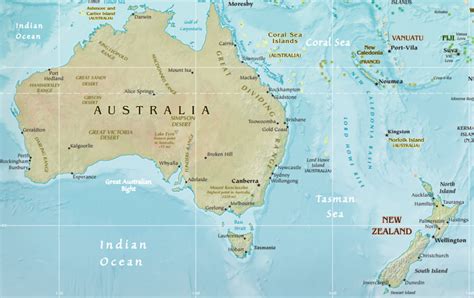
197313695 10159183237068467 8969373582506922733 n
Despite an “extremely challenging” start to 2022, Cathay Pacific is “resolutely committed” to protecting its position as a leading airline at its Hong Kong hub. “We have absolute confidence in the long-term future of Hong Kong. Everything we do at Cathay Pacific is in the service of Hong Kong”, Chairman Patrick Healy says in his comments on the 2021 results. Cathay reduces losses in “extremely challenging” year.
The continued strict zero-Covid policy in Hong Kong following the emergence of the Omicron variant has seriously disrupted Cathay’s operations in the past couple of months and cost the airline some HK$1.5 billion per month. The airline currently operates passenger services at just two percent capacity and cargo slightly below one-third as the Hong Kong government restricts the entrance of travelers and has imposed strict quarantine rules on airline staff. In 2021, Cathay’s staff spent more than 62.000 hours in quarantine hotels, with another 1.000 staff spending 11.000 hours in the airline’s Penny’s Bay quarantine facility.
Net loss reduced to HK$5.5 billion
Cathay Pacific Group reported a 2021 net loss of HK$5.527 billion compared to HK$-21.648 billion in 2020, a significant improvement despite the reduced operations. Total revenues were almost identical at HK$45.6 billion last year and HK$46.9 billion in the previous year.
The traditionally stronger second half-year actually produced a HK$2.038 billion profit attributable to shareholders, up from HK$-7.565 billion in the first six months.
The full-year result includes HK$832 million in impairment costs and related charges, mainly for twelve aircraft that are unlikely to return to service, as well as HK$385 million in restructuring costs, and a HK$210 gain on the dilution of an associate interest in Air China Cargo.
Last year, the airline carried just 717.000 passengers compared to 1.4 million in 2020 (including Cathay Dragon). Revenue Passenger Kilometers (RPKs) were down by 79.5 percent to 4.120 million with a load factor of 31.1 percent. Passenger revenues were -63.5 percent to HK$4.357 billion.
Demand was the strongest on routes to the Americas, especially student travel around August. The Southwest Pacific benefitted from quarantine-free travel to Australia for Australian nationals from November. European travel remained low but saw ‘occasional pockets of strong student travel demand’ in September. Travel to China and within Asia lagged behind, but saw some occasional spikes to Indonesia in Q2 that was offset by new restrictions to The Philippines
Group cargo revenues were up by 28.4 percent to HK$25.8 billion, thanks to yields that were 33.1 percent higher to HK$3.94 and which reflect the tense market situation with reduced capacity. Tonnes carried was actually just 0.1 percent higher to 1.333 million while cargo revenue tonne-kilometers were 1.1 percent down to 8.220 million. October was the strongest month with 136.000 tonnes carried. Cathay’s six Boeing 747-400Fs and the fourteen freighters of Air Hong Kong got company from six converted 777-300ERs that operated cabins without seats.
Its subsidiary HK Express ended 2021 with a HK$1.978 billion loss compared to HK$-1.723 billion in 2020, reflecting lower demand and the impact of travel restrictions and quarantine measures. The average load factor was just 8.8 percent. HK Express took a HK$41 million impairment on three aircraft. On Air Hong Kong, Cathay only says that the freight carriers recorded ‘an increase in profit’, with capacity up 2.8 percent.
Non-fuel costs down by 24.4 percent
In the difficult situation in which Cathay Pacific had to operate, it remained focused on strict cost controls. The Group reduced its non-fuel costs by 24.4 percent to HK$37.7 billion. Thanks to furlough schemes, leave without pay, voluntary separation, and early retirement, staff costs were down 28.4 percent to HK$11.3 billion. Fuel costs were up 11.9 percent, reflecting higher prices on the market.
At the end of December, Cathay Pacific had HK$30.3 billion in unrestricted liquidity, of which HK$11.1 billion in undrawn facilities. It can still draw down HK$7.8 billion from a loan facility after the government extended the drawdown period by a year until June this year. Net borrowings stood at HK$70.6 billion, down from HK$73.8 billion.
By the start of 2022, Cathay Pacific Group had a fleet of 234 aircraft, with 37 percent of its passenger fleet in storage outside Hong Kong. The main airline Cathay had 193 aircraft, Hong Kong Express 27, and Air Hong Kong fourteen.
Despite the difficulties, the group remains committed to receiving new deliveries. Cathay Pacific has scheduled for the arrival of seven Airbus A321neo’s this year and four in 2023, three A350-1000s this year, and one -900 in 2023. The 24 Boeing 777-9s remain on the backlog for deliveries from 2024 and beyond. HK Express will receive one A321neo this year, six in 2023, and nine from 2024 and beyond. Until 2026, the Group sees 47 leases expire on existing aircraft, of which fourteen this year alone.
Given the current uncertainties, Cathay is unable to provide any guidance on its 2022 results except that it is fully committed to continuing operations as best as it can. Part of this will be the roll-out of its new premium lifestyle brand ‘Cathay’ that is launched in Hong Kong last July and offers dining, shopping, and hotels even to customers that don’t fly.
Views: 6



